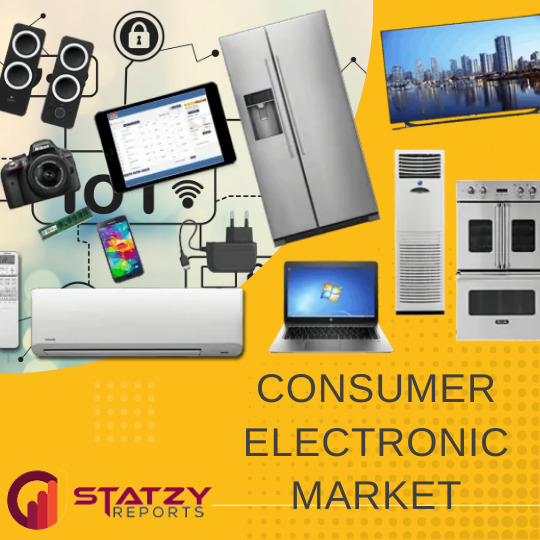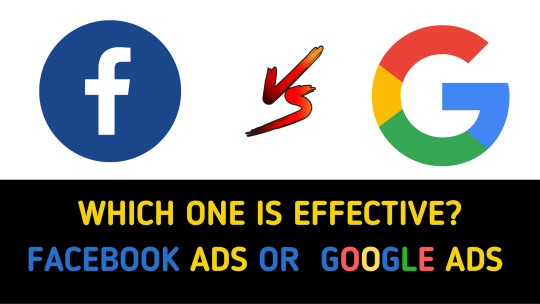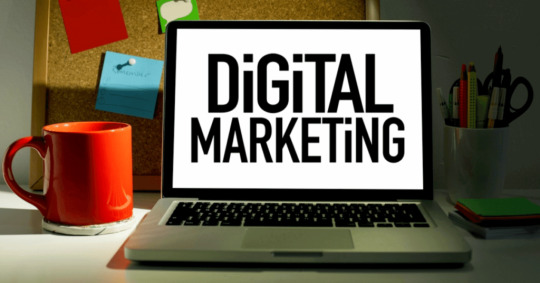Don't wanna be here? Send us removal request.
Text
Custom Duty Hike encourages Domestic CIoT market

IoT in Consumer Electronics is considered a customary feature these days. Domestic manufacturers now have a chance at capturing the market as the global manufacturers are now at a clear disadvantage.
The Consumer Electronics Market is beginning to lean toward advanced IoT features. Consumers are building habits that can be facilitated only by Smart Devices in contrast to their conventional day-to-day devices. These smart gadgets are products of global manufacturers aimed at capturing India, one of the largest consumer electronics markets in the world.
A sudden increase in customs is expected in the domestic appliances and consumer electronics industry. This decision was taken in order to encourage and motivate local manufacturers in the Consumer Electronics Industry. The Consumer Electronics and Appliances Manufacturers Association (CEAMA) believes this to be a scheme that benefits major R&D and localisation projects that will indefinitely lead to import substitution of major products. Some of the end products of the IoT in the consumer electronics industry include Smart TVs, Smartphones, Smart Kitchen Appliances (Refrigerators and Washing Machines), and Computers / Laptops / Tablets.
Domestic manufacturers are starting to skewer the market by determining effective key points of the industry:
Increased usage of Smartphones and Tablets for controlling IoT devices.
IoT devices are different sensors, actuators, appliances, machines or gadgets that can be controlled or monitored using the Internet. We are aware of the increased usage of smartphones and the increased availability of the internet in India. Now this gives consumers accessibility to predominantly use their smartphones or tablets to control or monitor different IoT devices that have been set up in their vicinity.
The penetration of the internet across enterprises, industries and residents.
Over the years, many different businesses and individuals have gained unlimited access to the internet. It is evident that IoT devices require huge volumes of data as the devices are being made with a 24x7 functionality feature. Similarly, the individuals who wish to control different IoT devices must have access to an enormous volume of data or the internet for the smooth functioning of these devices.
(Note: The data volume of IoT connections are expected to reach 27.1 Billion Units by 2025.)
Huge Investment by companies to develop IoT.
A major concern for all IoT related projects is security detail. Major technology leaders in the IoT space work towards eliminating any vulnerability in the security aspect of the projects. Since it is a concern for all, any valid idea or innovation in this stream has a huge investment opportunity.
Some of the major challenges that the Indian Manufacturers must negate in the IoT space are
Development of procedures to unify data and make it compatible with different cloud services.
Standardizing M2M protocols to target low power devices and enhance power conservation.
Diversifying Firmware and Operating Systems in order to patch timely and respectively.
Geographical Study
A major pattern is observed in the use of IoT in India. Tier-I cities show a distinct number of IoT devices implemented in various enterprises and industries due to a huge number of startups. In contrast, Tier-II and III cities only show potential for growth in the agriculture and healthcare sector as these industries are predominant in such geography.
Growth Opportunities:
Microcontrollers (MCU) are critical in the manufacturing of IoT devices. A sudden custom duty hike will lead to the consideration of chips made in India. This opens up huge opportunities for the ever-increasing demand for electronic components. A huge scale in the development of single-chip is noticed and now being sought after for battery-operated devices, SOCs with embedded cores, GPUs and Integrated wireless connectivity.
Research and Development of IoT projects for the promotion of Green buildings is a major point of focus for Tier-I cities in India. This project is also capable of attracting huge investments from various companies that have an aligned focus on a sustainable ecosystem. A major trend is also observed in the field of Blockchain technology that complements features such as security enhancement, the Possibility of Low-value device inclusions and simplified device management in the individual IoT solutions offered.
Extended IoT Applications (India)
Right now it is safe to assume that the market is closed for external global players of CIoT solutions in India. Thus, to make the best use of the current situation, different product categories must be covered to fully cement into the market. Different verticals where the eternal players have much of their focus are:
Manufacturing/Supply Chain: Focus on different IoT solutions for the development of Improved Process Automation, Connected Factories, Robotics, Tracking Goods, Tools, etc.
Agriculture: Focusing on different IoT solutions to control and monitor moisture/pH factor of soil, etc.
Energy: Efficient management of energy usage, potential faults, accurate risk and hazard analysis with huge real-time data.
Healthcare Industry: IoT solutions focused on providing assistance to people/patients with push-button emergency alerts, automated medication with a supply of medicines, and alerts doctors from the device in a real-time scenario.
Questions:
Which Specific set of products (Apart from the above) in the Consumer Electronics Industry, would see an Import hike?
As reported by the CEO of Panasonic (India and South America), Completely Built-up (CBU) audio products may expect a hike in import tariffs.
Can you Please name any predominant Indian Brand / Company that has shifted towards IoT in the Consumer Electronics Market?
There are many brands that have begun integrating IoT into their consumer electronic products. One of such brands is Titan which is part of the Tata Group. Titan has invested more than 3 Million USD in a startup called Coveiot, which specializes in smart wearables.
Which kind of devices are common in India in the CIoT industry?
The Indian CIoT electronics market product categories are Smart TVs, Smartphones, Smart Wearables, Smart Home Appliances. Home Automation devices are dominating the IoT in consumer electronics market share.
Request Free Sample
https://www.statzyreports.com/free-sample/sr99302/global-entertainment-consumer-electronics-market
0 notes
Text
IoT in Consumer Electronics - Global Market Prediction 2030: $292.83 Billion & CAGR of 13.9%

The value of the Global Consumer IoT market in 2020 was 70.52 Billion USD. This value is projected to increase with a CAGR of 13.9% by 2030 and a value of 292.83 Billion USD. The Consumer IoT or IoT in consumer goods commonly refers to connected gadgets programmed in such a way that they interact with one another and exchange data and information and even perform tasks on command. Some important real-life applications of IoT in the Consumer Market are Home Security and Smart Dometic, Personal Healthcare, Smart Wearables, and Asset Tracking.
Impact of COVID-19:
The IoT in the Consumer Market is fueled by factors such as habituation to smart devices and increased internet usage. This has led to the development of various applications that offer solutions for fitness and health tracking, smart home automation and smart wearables. These applications were in increased demand during the pandemic and thus it is safe to say that the IoT in the Global Consumer Market was positively affected during the entire course of time. This condition of the market originated due to the sudden impact, which led to increased risks in terms of data breaches and data security. The industry has been on a streak towards developing new and unbreachable systems that offer maximum security to its customers.
Market Segmentation:
The global consumer IoT market can be segmented into offering, connectivity, deployment and region. Let us understand the contribution of each segment toward the growth of the global CAGR of the industry.
By Offering:
Hardware is the major offering, followed by software and then services. The software and services offering is increasing at a steady rate but their contribution to the consumer IoT market is minimal compared to industrial IoT.
The Hardware offering mainly gains volume and revenue due to the production of processors (includes Microcontroller (MUC), Microprocessor (MPU), Digital Signal Processor (DSP), an Application Processor), diverse network infrastructure (including Server, Storage, and Others) and also Sensors.
By Connectivity:
The connectivity in IoT devices can be classified as wired and wireless. The major focus of the industry is on some of the wireless connectivity offered such as Wi-Fi, Bluetooth, NFC, Zwave, ZigBee and RFID. The best mode of connectivity is decided upon criteria such as range, bandwidth, QoS, security, power consumption, and network management.
A trend towards range and security has been developing over the years. Thus, major research and developments are being done to address this and issue better connectivity.
By Deployment:
The consumer electronics market report is similar when compared to the industrial IoT market in terms of deployment. The deployment in the consumer electronics segment is only limited to two options, On-Cloud and On-Premise. Some of the major companies in the consumer electronics market are fascinated and are working towards development in the On-cloud deployment of various new technologies.
By Region:
Region-wise the IoT in consumer electronics is divided into North America (U.S., Canada, and Mexico), Europe(UK, Germany, France, Italy, and the Rest of Europe), Asia-Pacific (China, Japan, India, South Korea, and Rest of Asia-Pacific) and Rest of the world. The rest of the world is put together, as the depth of the market in such regions is very nominal and the growth is also very premature. However, Asia-Pacific is expected to grow at an exponential degree (CAGR of 16.3%) during the forecasted period.
Competitive Analysis
Some of the common factors that are considered to impact the market include awareness of data privacy and security related criticisms and concerns. A huge demand is used in smart cities that are developing habitual behaviour towards smart devices and gadgets.
Major Competition is offered by the home automation segment. This offers tough competition to the consumer electronics market as It has the highest share in 2020, almost one-third of the global IoT market. The growth of this segment is projected at a CAGR of 15.8% by 2030. The consumer electronics market is second to the home automation segment. The best approach would be towards increasing government funding for R&D related projects. This will easily favour government regulations and encourage consumers toward ideas such as Green buildings which is the ideal concept for the future.
As discussed earlier, the Hardware segment has the highest share in 2020 in IoT in the consumer electronics market. But the software segment must pick up some pace to capture a higher market share. The estimated forecast for the market can be reached only if the software segment offers a CAGR of 15.1% by 2030. The overall consumer electronics market is hugely dependent on the growth of the software segment. Some of the major players that specialize in the software segment of the IoT industry are Amazon Web Services (AWS), AT&T, Robert Bosch, Robert Bosch, Cisco Systems, and IBM. Different use cases that are being solved over the years are Indoor Environmental Quality Monitoring, Energy Consumption Management, and Supply Chain Improvements.
It is predicted that the software segment of the IoT in the consumer electronic market would be able to perform better and grab a higher market share than in previous years. Many such innovative software platforms will play an integral role in future communities and smart cities. Thus, this segment must be watched and closely observed in the coming years.
Questions:
What are the Important factors that drive consumer IoT market growth?
A. Some of the factors that contribute to the growth of the IoT market growth are:
Adoption of connected and wearable devices like smartwatches, Rising number of internet users, and increased demand within the automotive industry.
Which End User segment would have the highest CAGR during this period?
The Automotive Industry Segment would have the highest CAGR of 15.8% during this period.
List Top 10 key players of the IoT in the Consumer Market?
Cisco Systems, Inc.
Honeywell International Inc.
Infineon Technologies
Intel Corporation
International Business Machines Corporation (IBM)
Microsoft Corporation
NXP Semiconductors
Siemens AG
STMicroelectronics
TE Connectivity Ltd.
What is the difference between IoT and Consumer IoT? Are they the same thing?
Internet of Things is a concept that has a wide array of applications in the industrial market as well as in the consumer market. The use case and the type of application derived with a consumer approach will make the system more consumer IoT product. Whereas any system derived to integrate an Industrial application would be reflected as industrial or business IoT solutions.
What is the projected spending on the Global Internet of Things (IoT) in the upcoming years?
The projected spending on Global IOT is close to 1.1 Trillion USD by 2023.
0 notes
Text
What Is SEO And How It Has Changed Over The Years

SEO is a buzzword that anyone having a website must have come across at some point in life or the other. The important thing is understanding what is SEO and how exactly you can gain from it. So, this article would make sure that you have ideally no doubt about SEO whatsoever and help you with some of the changes that it has gone through in the past. So, let us get started.
0 notes
Text
How To Boost Ranking In Google Search Engine With Strategic Internal Linking?
1 note
·
View note
Text
Which one is effective: Facebook ads or Google Adwords?
https://www.idotcommers.com/facebook-ads-or-google-adwords/

0 notes
Link

Digital Marketing Trends 2021 The year 2020 being a downfall for all businesses and professionals was something that was not expected. For community-minded people such as marketers, we need to collaborate across multiple departments. As we keep a track of our competitors in the market we are deeply entwined to the goals of our customers.
0 notes
Link

2 notes
·
View notes

